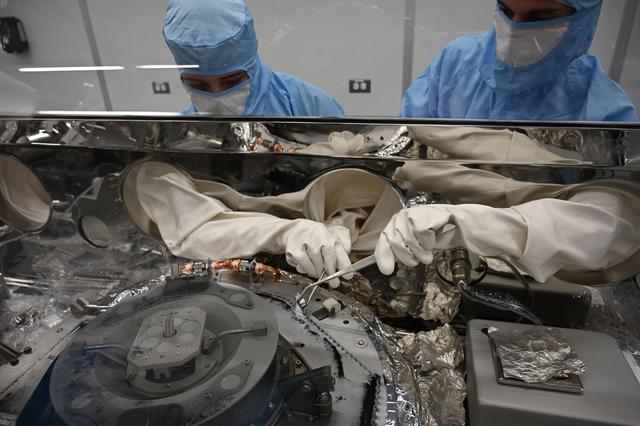News

The Year in Space News – A Review
As 2023 comes to an end, Motiv Space Systems looks back at the numerous achievements made over the last year in the exploration of space.
By far, the most talked-about event that occurred in the last year was the return of NASA’s OSIRIS-REx mission to the asteroid Bennu. On September 24, a sample of the asteroid landed in the Utah desert, where it was picked up by scientists for subsequent analysis. The mission marked the first return of an asteroid sample by the U.S., following the successful return of a sample by Japan several years ago.

Astromaterials processors Mari Montoya, left, and Curtis Calva, right, use tools to collect asteroid particles from the base of the OSIRIS-REx science canister. Credit: NASA.
However, in April, the ESA launched its Jupiter Icy Moons Explorer (JUICE) mission to explore the planet and its three moons that have oceans. The orbiter, which will arrive at Jupiter in July 2031, will spend about four years making 35 flybys of Ganymede, Callisto, and Europa. Over the course of the mission, JUICE will use a suite of sensors and geophysical instruments to help scientists on Earth better characterize the nature of the Jovian moons.
The James Webb Space Telescope (JWST) completed its first full-year of operation in 2023. It sent back its first images in the second half of 2022. These images are allowing astronomers deeper insight into the early universe and wowing countless people with their majesty. Some of the biggest news related to the JWST is the information it is providing about exoplanets, helping scientists with their search for planets outside our Solar System that could harbor life.

Side-by-side comparison of the “Pillars of Creation”, one of the Hubble Space Telescope’s most-recognized images on the left, with the JWST image on the right. Credit: NASA.
Moving forward with the Artemis Program and the exploration of the Moon, several countries contributed a wealth of new information about the lunar surface. Throughout 2023, new spacecraft arrived in lunar orbit or landed on the surface to deploy rovers or perform stationary exploration. Motiv is keen to continue the success of these missions through contributions to future robotic exploration of the Moon, such as the development of the COLDArm system.
Commercial space tourism continued to grow in 2023, with a private mission to the International Space Station in May and the first crewed suborbital flight by Virgin Galactic. NASA continues its partnership with private companies across the country, including Motiv, to develop new technologies and systems that will be integrated into the future of human spaceflight. The development of commercial space tourism plays a key role in demonstrating the effectiveness of private investment in space exploration.
Throughout 2023, there have been a number of exciting new missions. But things are still happening with (much) older missions. In October, NASA uplinked software upgrades to its two Voyager probes, launched in 1977, with Voyager 1 more than 15 billion miles away and Voyager 2 more than 12 billion miles away.

The Voyager 2 spacecraft undergoing testing in 1977. Credit: NASA.
It certainly has been an exciting year for space exploration, both manned and robotic, and Motiv is looking forward to continuing to contribute to the future of robotic space exploration in 2024 and beyond.